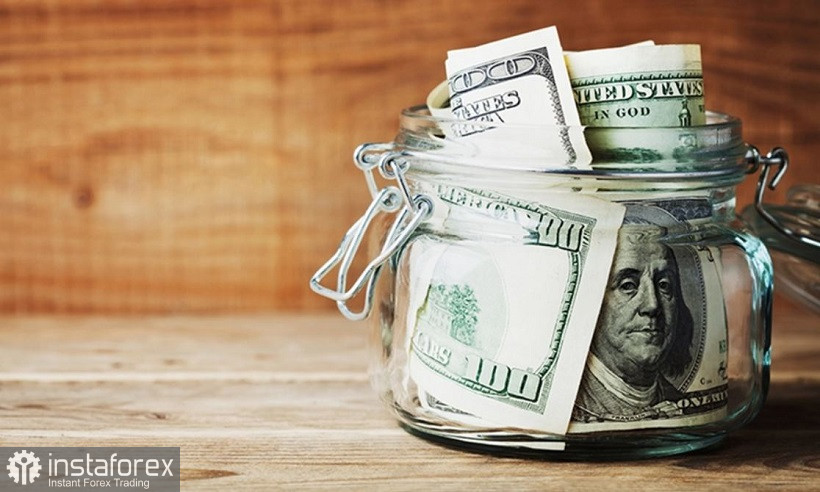The GBP/USD pair is diving down against the background of the general strengthening of the greenback and the devaluation of the British currency. The pound reacted painfully to the rather weak PMI data, which came out in the red zone today. However, this is rather a formal reason for opening short positions on the pair, because just last week almost all key macroeconomic reports in Britain came out better than expected.
In particular, inflation jumped to 5.4% (a 30-year record), and the unemployment rate fell to 4.1% (despite the fact that the growth rate of applications for unemployment benefits decreased by 43,000). However, at the end of last week, one release disappointed: the volume of retail trade in Britain has significantly decreased - both with fuel and without this component. But as if in contrast to this news, Prime Minister Boris Johnson announced that most quarantine restrictions are being lifted in the country. In addition, on Friday it became known that another political scandal around Johnson (the so-called Partygate) ended in nothing: the "backbenchers" could not gather the necessary number of votes to launch the procedure for declaring a vote of no confidence in the prime minister. The head of government himself limited himself to apologizing for violating the quarantine rules, while refusing to resign on his own. Therefore, apparently, the next scandal around Johnson will affect only his personal rating and the rating of the Conservative Party. Whereas the issue of resignation is de facto removed from the agenda, especially against the background of increasing military-political tension between NATO and the Russian Federation.
All this suggests that the main locomotive of the decline of GBP/USD is the greenback, while the pound only follows the quoted currency. Despite the combination of positive fundamental factors, the pound is not able to restrain the onslaught of dollar bulls. After all, the US currency is strengthening its position not only in a pair with the pound, but also throughout the market. For example, paired with the euro, the greenback entered the 12th figure, paired with the loonie, it rose by 100 points today, and paired with the aussie, it dropped to the base of the 71st figure – for the first time since December 20th. The US dollar is actively gaining momentum ahead of the announcement of the results of the January Federal Reserve meeting.

In general, the dollar index this month reflects the general nervous state of market participants. On the eve of the head of the Fed's speech in the Senate, the greenback strengthened its position everywhere, expecting hawkish rhetoric from Fed Chairman Jerome Powell. On the one hand, Powell did not disappoint traders – he really announced an interest rate hike and a reduction in the balance sheet. But all this was done in his usual manner - rather cautiously, diplomatically and uncertainly. The head of the Fed did not talk about the specific timing of the first increase, and also did not announce the pace of tightening monetary policy. After that, the dollar index turned 180 degrees and headed down. The record growth of US inflation and hawkish comments from the rest of the Fed representatives did not help dollar bulls: the greenback was flying down, amid a decline in the yield of treasuries.
At the end of last week, the situation changed again, only this time in favor of the US currency. Numerous comments by economists, currency strategists and other experts provoked a stir around the dollar. In particular, according to analysts at Goldman Sachs Bank, the Fed will raise the rate every time it meets, starting in March 2022 (four increases in total). If this scenario is implemented, the reduction of the balance sheet may be announced already at the May meeting. However, this is the most hawkish forecast – according to the baseline scenario, the Fed will raise the key rate in March, summer (in June or August) and December. Also, this scenario assumes the start of the reduction of the balance in July.
Similar forecasts are voiced by many representatives of banking conglomerates. Hawkish expectations have significantly increased, and against this background, the US dollar index today updated a two-week high. The greenback strengthened its positions in all major pairs– including the pair with the pound. It is noteworthy that the pound could not take advantage of all the fundamental trumps that it had up its sleeve. Even rumors that the Bank of England will raise the interest rate again by 10-15 points in early February did not help the British currency: dollar bulls sweep away everything in their path, guided by the rule "buy on rumors, sell on facts".
However, it is this trading rule that can play a cruel joke on adherents of a strong dollar. Any deviation from the above scenario (three or four raises) will put the greenback under the strongest pressure. Therefore, at the moment it is advisable to either take a wait-and-see position for the GBP/USD pair, or consider the option of short-term sales with the obligatory closing of orders before the announcement of the results of the January meeting of the Fed.
The nearest support level is 1.3420, which is the lower line of the Bollinger Bands indicator on the daily chart. It is too early to talk about the conquest of the 33rd figure, although on the eve of the January meeting, the GBP/USD bears may test this price area.
 English
English 
 Русский
Русский Bahasa Indonesia
Bahasa Indonesia Bahasa Malay
Bahasa Malay ไทย
ไทย Español
Español Deutsch
Deutsch Български
Български Français
Français Tiếng Việt
Tiếng Việt 中文
中文 বাংলা
বাংলা हिन्दी
हिन्दी Čeština
Čeština Українська
Українська Română
Română

